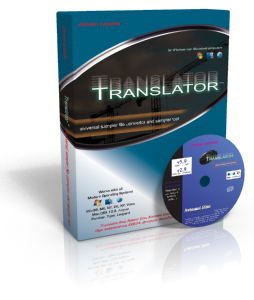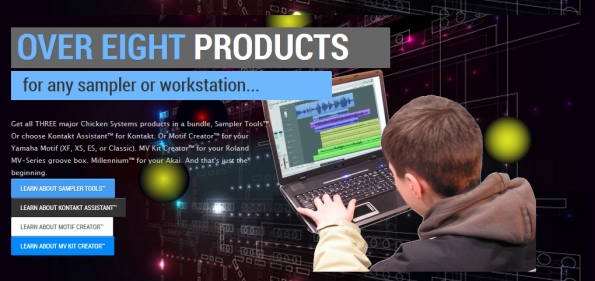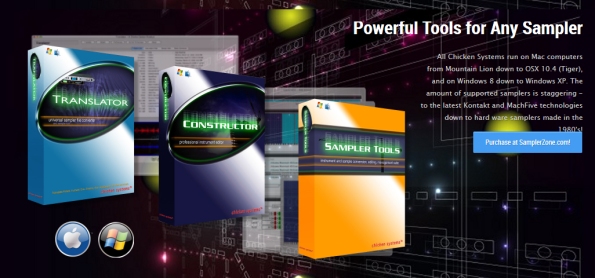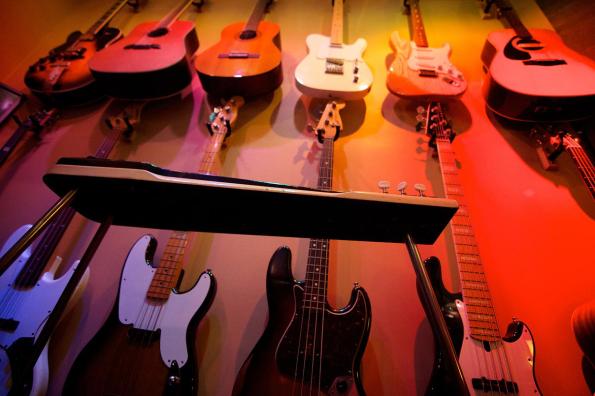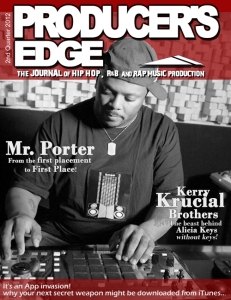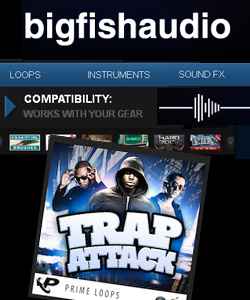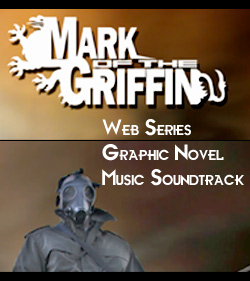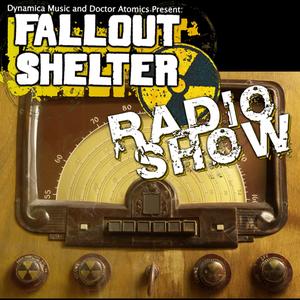Archive
How We Interpret Sound-Dr. Floyd Toole
How We Interpret Sound:
An Interview with Dr. Floyd Toole
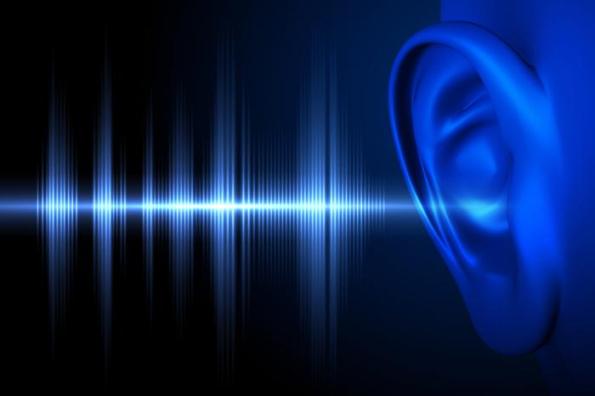
Interpretation is a critical part of life. It determines our likes, dislikes and personal preferences regarding everything from food and clothing to living environment and choice of entertainment.
 To better understand the concept of how people interpret sound, I interviewed famed loudspeaker and acoustics expert Dr. Floyd Toole, who has devoted his entire career to acoustical and psychoacoustical research for the National Research Council of Canada and Harman International.
To better understand the concept of how people interpret sound, I interviewed famed loudspeaker and acoustics expert Dr. Floyd Toole, who has devoted his entire career to acoustical and psychoacoustical research for the National Research Council of Canada and Harman International.
How We Interpret Sound
For some people, great sound is considered to be whatever is popular in current culture. That might be rumbling bass and just enough treble to hear the melody or it could mean an engrossing listening experience that envelops like a blanket on a cold day. Then there are the physical aspects of what is actually coming out of a loudspeaker — something that most people are not aware of, although it’s simpler than you might think.
According to Toole, internal perception and scientific truth are the two elements at play in the way we perceive sound. “The reality is that in the history of audio, the mythology that has built up about certain brands and speaker designs and electronic algorithms and so on … [but] precious few if any of those comments are based on double-blind tests, so the opinions people have expressed were partially formed before they ever heard a sound,” he says. “I did my first double-blind sound test in 1966. I thought I would [use] a [single] loudspeaker and that would be that, [but] this particular loudspeaker was awful. A friend brought [another] … loudspeaker in and it was very different. So I did [a] randomized double-blind listening test. It was very important [that] people not know what they were hearing.”
Everyone in the test agreed on what they liked, and all favored the same loudspeaker — the one with the smoothest and flattest response. Yet the results were not what Toole expected, and to his surprise, he discovered that there had never been any serious scientific research done on the relationship between measurements and subjective opinions of loudspeaker sound quality. He spoke to his boss and began his life’s work.
“I spent the rest of my [career] doing that,” he says. “Everything that followed since those early tests has confirmed those findings: The smoothest, flattest loudspeakers win double-blind listening tests. However, when you go into a store and remember what you may have heard about a product, or listen to a salesman, your mind is partially made up. When listening “blind,” without the biasing influences of price, size, brand and appearance, people turn out to be remarkably similar in [terms of] what they like and dislike.
“Recordings sound better when played through neutral loudspeakers. The goal is for everybody in the audio universe to have neutral loudspeakers. And we’re not far away,” Toole states. “Most of the professionals and [many] loudspeaker manufacturers have figured it out. The problem is, the populace at large is not well-informed.”
“If you are fortunate enough to see a set of anechoically measured curves (i.e., measurements taken in a room with virtually no sonic reflections—Ed.) that are smooth and flattish on and off axis, the loudspeaker is likely to sound good — [that is,] neutral,” he adds. “There’s no mystery to it: If you don’t like what you hear in that loudspeaker, don’t blame the speaker, blame the recording.”
How to Optimize Sound in Your Home
To make the most of your home sound system, it’s no secret that you’ll need quality speakers. “If you purchased a good loudspeaker to begin with, leave it alone.” Toole advises. “Several room equalization techniques exist, implying that any loudspeaker in any room can be made to sound good. [Equalization] may or may not improve the sound of a poor loudspeaker, but unfortunately there is a good chance you could degrade the sound of a good loudspeaker. Two ears and a brain respond very differently to a complex sound field — and are much more analytical — than an omni-directional mic and analyzer. That said, equalization at bass frequencies is almost always helpful in dealing with room “boom” – [that is,] resonances in small rooms.”
According to Toole, the first thing you should do when setting up your home sound system is to adjust all channels to be at the same levels, and so that they all arrive at the right times. Many receivers and processors offer controls that can can assist with this.
In terms of room acoustics, if you start with well-designed loudspeakers, normal furnishing may be all you need. “Some audiophiles think all reflections are bad,” observes Toole, “but such rooms are oppressively dead. It turns out that a happy medium is easily achieved in normal rooms. Bookcases, lamps, tables, chairs, carpet and drapes — all of these things bring room acoustics into the range of acceptability. If you live in such a room, just buy some very good loudspeakers, hook them up, turn on your system, play something you like and enjoy it.”
“Take note of the fact that there is substantial scientific research that has been done to provide guidance,” are Toole’s parting words. “Manufacturers of quality loudspeakers tend to reveal the performance of their products. Others don’t. You should be skeptical of those who don’t.”
Photograph courtesy of Dr. Floyd Toole.
For more information about Yamaha home speakers click here.
What Exactly Does Producer Mean, Anyway?
REPOSTED FROM HERE: http://flypaper.soundfly.com/tips/what-exactly-does-producer-mean-anyway/
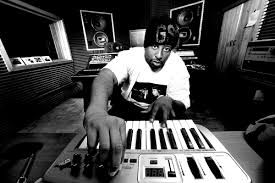
What Exactly Does “Producer” Mean, Anyway?
Music production. The term likely conjures mythical images of Sir George Martin running frantically around Abbey Road Studios, or Phil Spector conducting a massive orchestra. In their time, the term “record producer” simply referred to the person overseeing the completion of the musical product. Given the myriad music-making tools at our disposal today, however, this once-simple definition has become diluted and confused. So let’s clear up a lot of common confusion around the modern record producer’s roles, responsibilities, and duties.
“Producer” Defined
According to the performers rights organization BMI, “a producer is to a recording as a director is to a film. When it comes to making a film, the buck essentially stops with the director. It’s the director who steers the ship, working with everyone from the technical editors to the actors in order to achieve his or her overall vision of the movie. It is exactly that way with a producer when it comes to making a recording.”
In musical terms, this means that a producer needs to have the technical expertise to make critical decisions about a mix with the engineers, the songwriting expertise to craft the arrangement of songs with the artist, and the entrepreneurial acumen to manage budgets, find studios, and negotiate contracts. In short, the producer guides the creative process, acting as part project manager, part creative consultant, and part artist.
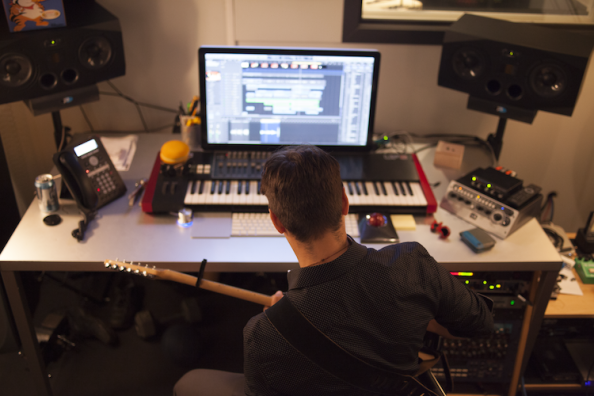
A Producer’s Role in the Recording Process
In this traditional sense, the producer must possess a set of technical skills, as well as the big-picture mindset to manage the project from above. To help craft the “sound” of an album or project, the producer must understand the nuance of engineering a full mix in order to knowledgeably ensure that certain sounds are more emphasized than others, and that the mix carries the artistic message intended by the project. At the same time, the producer must have an understanding of the recording process; finding the right studio with the right equipment to record the right sounds is essential to the mix, the sound, and the perception of the album.
With the rise of the Digital Audio Workstation, the traditional studio and analog model have been turned inside out. What happens to the notion of a producer when the “studio” is contained inside a computer?
What’s more, while recording, the producer must be able to coach the musicians on getting the right sounds out of the instruments at hand — be it vocal takes in the booth or different voicings of the same chord on a piano. In this way the producer also treads into songwriting territory, often helping to craft the trajectory of the track.
+ Learn more: Explore chord voicings and much more in our course, “The Building Blocks of Piano”
Of course, as with most deeply artistic endeavors, this role varies project-to-project, and indeed, producer-to-producer. Though it sounds like a lot, different genres and artistic styles have different needs. According to producer Donny Baker, “the music producer is hired because of his ideas in your genre of music.” That is, often, producers will have a specific specialty that they excel in; this specialty, likely their genre-based experience, will make them a desirable managerial and stylistic compliment to the project at hand. For instance, sometimes a project needs someone to think about instrumental arrangement, whereas other times artists will want complete control over that aspect of their songs. Producer Phil Ek sums it up: “I think a good producer agrees with what is the best for the band and helps bring out the best and makes it sound the best and have them perform at their best. Whether it’s the producer’s idea or not, that’s the proper creative direction.”
The Rise of the Digital Audio Workstation
In years past, a producer would fill these traditional roles across a project slated for release through a label, and would get work through studio-based projects and timelines. However, with the rise of the Digital Audio Workstation (or DAW, for short), the traditional studio and analog model have been turned inside out. What happens to the notion of a producer when the “studio” is contained inside a computer?
It gets even trickier for the so-called “bedroom producer,” who pulls samples and software synths together into an album. The beatmaking, songwriting, mixing, and engineering all take place simultaneously in the DAW.
The answer, as you might have guessed, is rather complex, and has lead to a fragmenting of what one might traditionally consider a record producer, as well as a heated debate within the music community at large. But, in many ways, the roles are still similar, and the difference hinges on one key distinction: beatmaker vs. record producer.
Beatmaker vs. Producer
In simple terms, the distinction between a beatmaker and a record producer is similar to the difference between an old fashioned songwriter and a record producer: the songwriter would simply be in charge of writing the song, which would be in turn performed in the studio by musicians and artists who would ultimately release the song. (Note: This still occurs, but is much more confined to the upper-echelons of pop songwriting.) The analogy holds: the beatmaker creates the beat or beat idea, which is sold or absorbed by an artist’s project and turned into a full-fledged song by the producer.
However, in increasingly popular forms of songwriting that are informed by technological production in DAWs, this distinction treads into murky waters. What if, say, a producer of a hip-hop album made a beat in a DAW that the artists runs with, only for the producer to come in and engineer the vocal performance, all of which is sent off to a separate mix engineer to be glued together. The “producer” is now beatmaker, songwriter, and record producer all in one. It gets even trickier for the so-called “bedroom producer,” someone like the artist XXYYXX, who pulls samples and software synths together into an album — in this case, the beatmaking, songwriting, mixing, and engineering all take place simultaneously in the DAW.
The distinction between beatmaker and producer is in whether someone makes a beat and hands it off to be turned into a song, or whether they make a beat and a songwriting idea and see it through to completion.
How can we sift through these semantic weeds? And why does it even matter? Well, crediting in the music industry is a big deal — and getting paid for work done matters immensely to producers, managers, and artists alike. Ultimately, the distinction between beatmaker and producer lies in differentiating between someone who makes a beat and hands it off to a crew of people to turn into a song, and a person who makes a beat and a songwriting idea and sees it through to completion with the artist, album, or project. If you’re doing all of that work to take a musical concept to market, then you’re producing. Maybe in this example the producer also gets a songwriting credit — but they still craft the final product.
In this way producing is more accessible than ever — but making a beat in Ableton isn’t producing outright. The challenge still remains: can you write, record, engineer, mix, master, and release your own material on your own or with an artist on your team? Taking that next step — that’s the mark of a true producer.
Other articles from Myles Avery
Chicken Systems Translator Pro Software Interview
Chicken Systems Translator Pro Software Interview
Return of the ASR-10 part III
words by Drew Spence
Still rocking a hardware sampler and want to increase its palette? Ever wish you could expand your library by using the soundbanks of other samplers? Enter Chicken Systems with their Translator Pro software that converts across numerous formats. Let’s dig in and get the full story.
Drew Spence: Although music, both sonically and production-wise has changed significantly in recent years, the hardware sampler still get used in some important ways in the studio. What do you attribute its staying power to?
Garth Hjelte: I think in many ways, the dedicated hardware sampler “feels” more like an instrument than a systematic software sampler that integrates perfectly with modern recording systems. The sound that comes out often feels like it was manufactured AS a music instrument, not merely imitating one. And I’m saying this in regard to all types of sounds – not just imitative sample sets but also synthetic textures or even drum and percussion sounds.
Right now I put hardware samplers in three categories: first you have the real old stuff circa late ’80’s early ’90’s where even if the sampler was 16-bit linear, the sound was hardly that. Listen to a hi-hat on one of those machines – it’s much trashier and not as transparent. Other sounds have that “rounding” and slippery feel to them. Pads and strings can have this special thickness to them.
Second, you have the samplers built in the mid/late ’90’s, like the Akai S5000/Z-series, or the MPC1000 series, or even the Emulator 4. These were attempts to get better sound quality and generally they succeeded. Although at the time they were (and should have been) highly regarded, this is only because no computer-based system truly existed yet. After the software revolution (starting with Giga) got started, time passed those units by. Most of them just didn’t have the trashy charm the older stuff did.
The third category is the new workstations (Motif, Kronos) that have a fairly solid sample-playback engine in them. These are worthy of note because they allow live playing to included user-contributed things in addition to the solid ROM packages they offer. Not only that, in recent years they are innovating past the “loading on startup” things. The Motif XF can hold 2GB of flash memory – wow! The Kronos can stream from SSD hard drive. The Kurzweil PC3K has 128mb of flash.
So, back to using older hardware samplers, I think artists are looking for that more organic approach and they are finding it with the older samplers.
Chicken Systems has been around for a while. How did you get involved in the translation process and why?
We started out in 1988 doing only Ensoniq things – selling sample sets, hard drives, consulting, writing. In the 1990’s some DOS programs came along that could read and write Ensoniq floppy disks AND the SCSI drives. That was nice – it helped us duplicate the floppy sets we sold – but we wanted the authors to improve their programs, like make Windows versions of them, add features. They refused, so we wrote our own. These are the Ensoniq Tools programs and we even sell them today. These were the first computer programs we ever wrote and although they were innovative, we made our share of mistakes writing them.
The Ensoniq ASR-10 was out for quite a long time before a successor came out – the ASR-X in the mid-1990’s, and since the Tools programs were doing well, we decided to write Ensoniq ASR-X Tools too. One big problem with the ASR-X was that although they included the ability to read EPS/ASR disks, they didn’t read the envelopes correctly. The ASR-X did not have a initial level parameter – it assumed zero – where as the EPS/ASR did, and they didn’t compensate for it. So any sounds – even to this day, they never fixed it – where the initial level was pretty high or even greater than zero, and the attack time was greater than perhaps 50ms, came out as a slow or fluffy attack on the ASR-X. Plus, the ASR-X wasn’t truly programmable from the front panel – it needed a computer program to get at things to truly program it.
So, in Ensoniq ASR-X Tools we wrote our own converter that did a better job, and we called it… Translator. It still exists in the program.
Anyway, a couple years later, I think around 1997, I attended the NAMM show in Nashville upon the urging of Robin Boyce-Truitt of Keyboard magazine. The question in my mind was “what should my company do next?” Ensoniq had been purchased by Creative Labs and it was clear that the company was just hanging on. The ASR-X wasn’t really a true sampler, it was a groove box. Plus, for some reason, samplers were not good sellers back then. I think it was because no more innovation was taking place. I didn’t know it at the time, but most professionals were still using Roland S-760’s and Akai S3000’s created in the early ’90’s.
So I remember thinking that if my main market was Ensoniq’s, one thing I could do was to really start making more sounds for it. Unfortunately, I had to admit I had limited resources in which to do this. Paying full orchestras or going heavy programming my own sounds wasn’t truly in my wheelhouse anymore, although I liked doing it. But after programming a couple successful Windows programs, that’s what I enjoyed doing. So I had the idea of combining the ability to read AND write Ensoniq disks and expanding that to read other samplers disks, like Akai and Roland and Emu etc., in order to allow people to have infinite libraries, because there were untold thousands of Akai titles out there. Why program your own libraries when you can allow people to convert existing ones? The ultimate leverage!
Currently the ASR-10 allowed reading Akai S1000 and Roland S7x programs and patches. Not S3000, and plus the import was so-so. Since I noticed the EPS->ASR-X problem, I thought I could do a better translation PLUS add a great interface and supply even more formats. So I started programming the program, which I remember naming it at the 1997 NAMM show, walking along the sidewalk next to the convention center, as TRANSLATOR.
I spent the following months getting better at reverse-engineering foreign disk and file formats. I had some great help along the way with old Ensoniq people helping as well as some brilliant German engineers. I figured out AKai’s, Emu’s, and Roland’s formats alongside Ensoniq’s. The dream was being realized! The program was coming along nicely but was not released as yet.
Then it all started spiraling, and I was the right person (now as the corporation called Chicken Systems, I added several partners at this time) at the right time. During the next year, the first software sampler appeared – Seer Systems Reality. That was our next destination format. The Seer Systems guys helped me figure out more formats, as well as theirs. The more we worked on it, the better we got.
However, the real big thing was coincidentally in the same city – Austin Texas. This was were Nemesys started and Gigasampler was born. At first I considered them a competitor with Reality and I liked the Reality guys. But Giga had this new thing called disk streaming which allowed extremely large sample sets. Based on the advertisements and the external press, it was impossible to ignore.
I can’t remember at the time if we initially released Translator with conversion into Gigasampler, I don’t think we did, but it came out shortly afterwards. Sales then exploded. It was the perfect product to support, as it was Windows only, and we were only programming for Windows. Perfect.
So Chicken Systems had to start adjusting not only to a lot of money rolling in, but also how to keep up with the huge demands of better import coding and more formats. SampleCell, Kurzweil had to be supported. Plus, we were looking into new destinations. From the beginning, we committed ourselves not just to read all formats but to write to them. Plus, the new formats drew in the market of Mac users, and how were we going to make a Mac version?
I’ll leave the explanation of the 2000’s for another time, but basically that’s how we started innovating our core technology, which is translation instrument formats between each other.
I figure with your experience under the hood and behind the code with all these samplers, you could give us a few recommendations for a hardware sampler for someone who is new to production…
Well, it’s hard to recommend a hardware sampler, as the needs for it are so limited these days. Back 10-15 years ago, a hardware sampler would be for the true task of sound emulation in a studio or live. But not anymore, software samplers are ALWAYS much much cheaper – even free! – plus they are always better in most every way.
Hardware samplers haven’t gone away though. There are three types of markets I can count:
1) Nostalgic people who desire or appreciate the sound of older samplers
2) People who like the tactile response of something other than a computer
3) Workstation users (Korg Kronos, Yamaha Motif, Roland Fantom, other) who want to use the sampling sections to augment their ROM sets
The first set of people still use their Ensoniq’s, or old Akai MPC’s, or Emu Emax’s or Emulator III’s. Those were samplers that were here before the really pristine 16-bit samplers that sounded PERFECT. (Mostly those samplers are less desired because although they usually have more memory and features, there’s nothing unique about the sound. You might as well use a cheaper and better software sampler.)
The second type of people appreciate any hardware piece, and I think as far as true samplers go, really the Akai Z4/Z8 were the ultimate in that regard. Up to 512mb of memory, 24-bit, and you can use the akSys software to remote control it from a computer.
The third type of people at least have the modern era on their side. The Yamaha Motif XF and MOXF have flash memory, so you can actually create sounds and instruments and save them to the flash memory, so you don’t even have to load them or wait for them to load. Plus with the workstations, you can gig with them within hesitation.
What about software? If I use something like Kontakt, does it still make sense to acquire the older sampler disks and translate them or should I just focus on newer libraries?
Completely up to the user! I don’t think a blanket statement can be made like “the newer things are best”, although newer libraries really are excellent and hard to beat. But older libraries – even going back to Roland S7x libraries recorded in the 1990’s built for 32mb – have a excellent charm to them. I remember reading something about the band Heart, early in their career when they did lots of experimenting in the studio, that “everything comes out of only 2 speakers with other instruments ultimately anyway”. That’s true, so often the old sampling/old recording almost serves the purpose of what tube preamps and modeling plugins do today.
I would advise anyone to take advantage of the large availability of sounds and choose what’s best for you, plus do not discount older sounds, they often are free to little investment, yet you’ll be very surprised at how they sound. And, although there were garbage sound sets made in the past, it wasn’t so nearly prevalent as today, where the 40GB sound sets you get with a sampler often are fractionally usable.
How do I know what older formats hold up best? Is there any difference between these formats or any sampler’s library I should avoid?
They all are good. To be precise, we are talking about Akai, Roland, Emu, Ensoniq, Kurzweil, SampleCell; plus SoundFont. All pretty much share the same program structure. Akai by far has the greatest selection – there probably 25x as many Akai titles than the other formats. And with the other formats, they tend to revolve around what the manufacturer produced, there are few 3rd-party libraries. The people that broke the mold on that were primarily Spectrasonics/Ilio and East/West, being the largest producers. And regarding SampleCell, for years the Bob Clearmountain drums were the best selling sample CD library.
Can I use Translator as an instrument and play my samples from its interface or should I get a VST sample-host or program like Kontakt or Reason… or…? Are there any ideas to just making a VST version that loads everything?
Translator can audition instruments but it’s just to “see what they sound like generally”. It’s not for playback or performing.
Right now, I’m interested in the full bundle, but I read that soon they will all be merged into a single workstation. How is that coming along and how soon do you project it might be available?
SamplerTools is a bundle that includes the full versions of Translator, Constructor, and Instrument Manager. It doesn’t eliminate the selling of the three products, it’s just an extension of them. SamplerTools also includes 2 extra features: more features in each separate program that include the capabilities of the others, and a integrated interface (think new application) that includes all three features of the bundled programs in one interface. The two things are not complete yet, but we are shooting for a 4th quarter 2014 release. SamplerTools is being sold now, just with licenses to all three bundled programs. Registered owners will get the two additional things when they are released.
We thank Chicken Systems for this awesome software and the time. Find out more by visiting their website. http://www.chickensys.com/index.html
Kelvin Wooten interview Producer’s Edge Magazine
Kelvin Wooten
interview with Drew Spence Producer’s Edge Magazine
Those of us familiar with your story might appreciate the idea that Raphael Saadiq was on a phone call and overheard you going to town on a keyboard, in the background, and decided then, that you were a talent verse adding to his sound. But I find it more important to know, to gain insight on how an artist should treat their passion before being discovered that allows blessings to happen. If I am driven and do have desire what should I be doing, every day, to bring opportunities closer?
The opportunities just come, I believe. Whatever is driving you should stay in the driver’s seat… at least until you get to your destination. However, when starting out, I think it’s good to not know [the destination] sometimes. Take the time to hone in what you THINK you want to do…you may discover that it’s not what you thought. Once you know what it is, the opportunities come by being in the right place at the right time. And by right I mean the opportunity lining up with your passion. You will know. Everyone that knew me in 90s knew I was the biggest Tonies fan there was…and then Raphael calls…it was just right, and I knew it.
As a multi-instrument player, aside from the common traits of each, what attracts you to each piece?
Curiosity, I think. I always desire to find a common thread with each instrument I play. Basses and guitar have a similar makeup, but I relate them to the piano in my mind.
A guitar or piano seems like a natural addition to any session, but what about the more unique instruments, like the tuba and even acoustic drums in such an electronically tilted scene?
When done in good taste, sounds from anywhere can really work well together. Sound is sound, and texture is texture. You get that texture however you can. In my case it’s with a tuba, a fuzz box on a P-bass, or a saw-wave bass from Massive. In many ways I like where music is heading when I hear acoustic with the digital. It always refreshing on the first listen because you never know what could work together until you actually hear it.
And I do see the balance. True musicianship will always be valued but the advances of technology opens up so many doors. How are you able to incorporate a live musician aspect with programming and even gear pieces like NI Maschine?
It’s crazy, because the Maschine is the backbone of my workflow now. I just play it with feeling, trying not to quantize too much, and also using organic or real drum samples. Sometimes hearing the right acoustic kick or hi-hat on pad will dictate how it should be played. I will approach the sound as a real drummer would most of the time. I like the fact that the sounds are act my fingers sometimes and not turning on the console and miking the kit. It’s easier in my opinion to get the idea out and on to the next thing. Sometimes I may replace with the real thing and sometimes it’s fine how it is.
Is it okay to just play or does the modern scene demand a knowledge of computers and digital workstations? Do I need to know both; a musician’s language and now the techie jargon, just to get my creative ideas down?
Being a musician, it sure helps to know both sides. Modern advances are tools, and if used correctly the opportunities open up greatly. Just so long as you never forsake one for the other. I can spend more time being creative on axe when I’m not devastated by the computer screen. Shucks, the computer can play something I hear in my head that I can’t physically do sometimes. I’m not out for an award to be the most proficient on my instrument. I’m trying to make a track feel good. And the computer helps a lot when it’s just me and it. I’ll shred the lick when it’s time to do it live….
I’ve always felt players add a unique aspect to any session and offer a greater creative contribution – beyond the instrument they play. What advice would you give new producers, when considering going that next step and adding a session player or musician to their productions?
At whatever level, I think it’s important to hire the right musician for the job. Having a musician in his or her element means you don’t work as hard and pull teeth in the session. The morale stays high and everyone has a sense of worth and accomplishment. You’re more likely to be that much more respected in the musician community when that musician leaves telling their peers how much fun they had working with you as a producer.
And, at what level should the production be at before adding outside help? Is it about a gear level, a sound that should already be in place and is the mind set a factor?
It depends. You should be able to at least convey your idea to the player and they understand. If it’s a drummer, make sure the click track works for that drummer. If it’s a trumpet playing a super specific line, see if you can record a dummy track of it for reference…especially if you can’t write it out or don’t know your notes. When I’m the producer, I handle all the techie stuff so a player can play and relax.
Does the base musician skill set translate over generations or do you feel like you need to update your sound or technique every few years? Does a Jill Scott want the same artistic contribution that, say an Anthony Hamilton or Chrisette Michele would?
I think if the want you as the producer, they want what you can contribute from the base. While working with Saadiq for years, we’d get new toys and sounds for us, but wind up playing the same ole lines that people like. We knew we had our own vibe and that’s what artists liked. We tried to stay as relevant as possible by adding new soundsets every now and then.
Do you listen to modern tracks and allow the current sound to influence you or is it always about tapping in to your own voice and staying with what you naturally lean towards?
Oh, I listen. I listen to be heard and to be relevant. To adapt means to embrace the changes, at the same time not leaving what you do.
WoodaWorx
A studio is more than a room with equipment- It’s about the attitude and atmosphere. A studio should create a comfortable space that allows artists the freedom to tap into their most creative energies. Please tell us a bit about WoodaWorx and how you came to have such a diverse clientele.
I really like a lot of different music. I never know where my musical endeavors may lead, so I create a space for all to feel at home. From country to hip-hop, gospel to alt-pop… I want everyone to feel a sense of creativity from the room itself.
And what is the working system there? Is it more of a family tone where creative ideas are tossed about at leisure, or is it more directed towards a productive work ethic? Would you say there’s a general vibe or does it vary from artist to artist?
It changes and adapts to the artist or the client. If it were left up to me, I’d watch stupid and senseless Youtube videos 50% of the time! Those videos are icebreakers for a dull and dry session.
Let’s close with a little talk about your relationship with Anthony Hamilton and how that chemistry creates Home for the Holidays.
Me and Anthony are like brothers in and out of the studio. We rarely have any notions prior to recording or writing…if it comes, we seize it. If not, we’ll go eat and watch more Youtube videos. The music has to breathe, I believe. Laughter is place where we feel comfortable and can breathe. Once we aren’t thinking about the music, we make the best music.
And my final thought is about what kind of advice you offer the readership and what lessons you’ve learned about unlocking the creative potential by working alongside musicians and other talents that share our interests.
I’d say don’t think about it so much and just do it. It’s easy to unlock if you never lock it up. Don’t ever think you have to be at some super high level to be heard. You never know what resonates with people. Do it and get it out.
PE Mag would like to thank Kelvin Wooten for taking the time to talk to us.
You can bring home Anthony Hamilton’s Home for the Holidays this Holiday and make sure it’s locked in for every year as a new favorite. We have!
